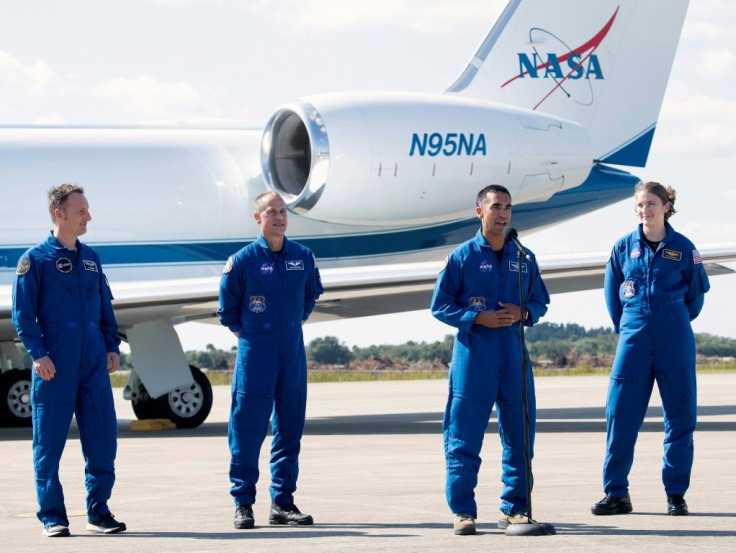NASA Sending Four Astronauts To ISS On Sunday
NASA is teaming up with SpaceX once more to send four astronauts to the International Space Station on Sunday, including three first-timers.
The crew of mission "Crew-3" will spend six months on the orbital outpost, conducting research in areas including material sciences, health, and botany, to help inform future deep space exploration and benefit life on Earth.
Americans Raja Chari, Tom Marshburn, and Kayla Barron as well as German Matthias Maurer of the European Space Agency (ESA) will launch aboard a Crew Dragon spacecraft named "Endurance," fixed atop a Falcon 9 rocket at 2:21 am (0621 GMT) from the Kennedy Space Center in Florida.
"Last night we got to go see Endurance in the hangar as they got ready to roll it out to the pad, and actually put our hands on the Dragon, which is a pretty special experience," Chari, a US Air Force colonel who is commanding the mission, said at a press conference on Wednesday.
Of the four, only Marshburn has gone to space before. The medical doctor flew aboard a Space Shuttle in 2009 and a Russian Soyuz spacecraft in a mission from 2012-13.
Barron, who along with Chari was selected for the NASA astronaut corps in 2017, the most recent recruitment, previously served as a submarine warfare officer for the Navy, and told reporters she saw many parallels between that experience and going to space.
The pair are also in the mix for NASA's Artemis missions to return humans to the Moon later this decade.
Maurer, a materials science engineer, will become the 12th German to go to space and will join fellow ESA astronaut Thomas Pesquet of France on the ISS, an overlap that will likely last a few days before the Frenchman returns to Earth with the rest of his Crew-2 colleagues.
Following a 22-hour voyage, Endurance will autonomously dock with the space station at 12:10 am Monday (0410 GMT).

Scientific highlights of the mission include an experiment to grow plants in space without soil or other growth media, and another to build optical fibers in microgravity, which prior research has suggested will be superior in quality to those made on Earth.
Maurer will help operationalize the European Robotic Arm which is currently being installed on the Russian side of the ISS, and test out CIMON -- an artificial intelligence assistant developed by the German space agency DLR, Airbus and IBM.
"It's an experiment which is really paving the way towards exploration," he said.
For example, it may one day act as a geology expert that astronauts on a future mission to Mars could consult for quick answers because the lag time to communicate with Earth would be 40 minutes, he said.
The Crew-3 astronauts will also conduct spacewalks to complete the upgrade of the station's solar panels, and will be present for two tourism missions including Japanese tourists aboard a Russian Soyuz spacecraft at the end of 2021, and the Space-X Axiom crew, set for launch in February 2022.
Crew-3 is part of NASA's multibillion dollar partnership with SpaceX that it signed after ending the Space Shuttle program in 2011, in order to restore American capacity to carry out human spaceflight.
Boeing is also part of the same commercial program but its Starliner capsule has been beset by delays and won't fly its first crew until the end of 2022 at the earliest.
© Copyright AFP {{Year}}. All rights reserved.





















